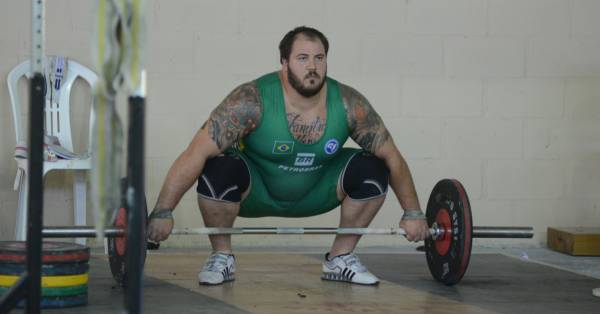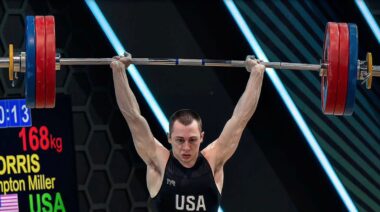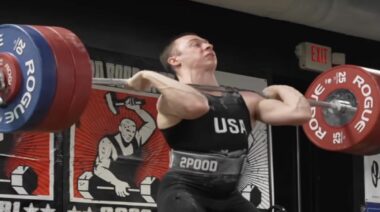Flexibility is the great bugbear for many weightlifters. Almost all recruits have to do remedial flexibility work when they start training in order to get the most out of themselves. Most trainees need extra work to get their shoulder, hip, knee, and ankle joints flexible enough to hit the proper lifting positions.
Physical Factors That Determine Flexibility
I spent a whole career fighting the flexibility issue. I had to work on my shoulders constantly to keep them in a barely acceptable state. Same with my ankles. Yet some people are more flexible than others when they start. What are the factors that determine these differences in flexibility among various people?
After discussing that with several athletes, we came to a conclusion that flexibility is determined mainly from two sources – native physical makeup and how a person trains. The most obvious factors in flexibility involve your physical makeup. The athlete generally has little control over these, but they are very important in determining your potential. Let’s take a look at what the physical factors are:
Age
Generally speaking, the older you are, the less flexibility you will display. This is especially true if we lived a very sedentary lifestyle. As kids, we start out being extremely flexible and the tendency is to lose that bit by bit as we grow older. This is why many masters weightlifters have to eventually abandon the squat style in favor of the high-catch power snatches and cleans. Up goes the bar, down goes the total.
Sex
Again speaking generally, women usually display more flexibility than men. It is rare that female lifters need any remedial flexibility work. This is especially true in the joints that are important in lifting, such as the shoulders and squatting joints. This is one source of male envy in the gym. Men have the testosterone, but women have the flexibility. Sort of a strange form of division of labor.
Bone Size and Structure
The larger your bone diameters, then the less flexible you’ll probably be. This is frustrating to weightlifters because while the larger bone enables larger muscles to be attached to them, they will then lose out on flexibility. Lighter-boned people generally have better flexibility, but will conversely have more trouble gaining the required muscle for weightlifting. This is yet another example of the eternal compromise. No one ever seems to have the perfect body for lifting. Everything is a mixed bag.

Femur Length
This is especially important in weightlifting due to its effect on your potential squatting. All other things held constant, the longer your thighbone the deeper you can get in your squat. Those with short thigh bones can only squat down so far. Added flexibility work would make little difference with these people’s squat depth. It will be geometrically impossible.
Every now and then we run across somebody with such a long femur that they have to worry about touching their gluteus to the platform. This always gets a nice crowd reaction, but it should be remembered that such flexibility has its disadvantage. Due to the resultant angles, it will be that much more difficult to climb out of so deep a squat position.
Connective Tissue
The degree of elasticity of the tendons and ligaments has a great bearing on flexibility. The more these can stretch, the more the associated joint can close. Those who are physically active naturally have more of this flexibility. Conversely, those with inelastic connective tissue are going to be a lot stiffer. The solution here is obvious.
Body Bulk
The bigger your body is, the harder it is to get into super flexible positions. This is true whether that extra size comes from muscle or fat. Both can act as a fulcrum when inserted nutcracker-style into the joint, preventing a full range of motion. This is true even if actual joint flexibility is sufficient. You just don’t have enough room when your arms or legs get bigger.
We’ve all seen lifters with biceps so big that they cannot bend their arms enough to rest the barbell on their shoulders. And those who do a lot of squats will find that their range of motion goes down as their legs grow. That is inevitable because the upper and lower parts out of the limbs have nowhere else to go except to slam into one another and can only be compressed so far.
Training Factors That Determine Flexibility
That is about it for the physical factors. The second groups of factors involve how an athlete trains with whatever body he or she does have to begin with. Regardless of your physical makeup, the way you train can still have great influence on your level of flexibility. The good news is that you have a greater degree of control over your destiny in regard to the training factors.
Participant’s Level of Activity
As alluded to earlier, the more active a person is, then the more likely he or she will be more flexible. A common observation here applies to that of squatting in Asia versus the Western world. Children from both parts of the world have no problem with this flexibility as babies and toddlers, but as they grow older you see a major difference.
The Asians still squat a lot in their daily activities and so never lose their flexibility. In the Western world we like our chairs, so we have no need to go much better than parallel when we sit down, often far less (think recliners and lawn chairs). The end result is great inflexibility in the legs and, thus, greater difficulty hitting the proper squat position in the snatch or clean.
Range of Motion
Weight trainers of all persuasions are constantly told to do their exercises through a full range of motion. They should indeed follow that advice. Those that cut their lifts short will find that their associated joint flexibility will be cut short as well.
Muscular Balance
Every muscle in the body has another of muscle that acts as its antagonist. If one muscle is responsible for flexing a joint, its antagonist will be responsible for extending that joint, or vice versa. It then follows that each of these muscles should be exercised more or less equally to ensure that there is not an imbalance in strength or hypertrophy and that subsequently, inflexibility does not develop.
Bodybuilders probably have fewer problems with this since it is necessary for them to develop every muscle equally to obtain what they incorrectly call “symmetry.” They will have great biceps and great triceps to match. Weightlifters have a more frequent problem with this due to the fact that they emphasize the extenders in the legs and back and pay less attention to the contractors. The result is often large quads and underdeveloped hamstrings. We are all familiar with those people who bench press constantly but never do any upper back work. The result is a tight pair of shoulders as the pecs gradually shorten.
The Take-Home About Flexibility
Again note that these last three items can be controlled with proper training methods. With your physical factors, you will have some degree of control, but heredity might ultimately limit your choices in many cases. At least you can completely control your training methods to ensure that you can be as flexible as your physical plant allows.






